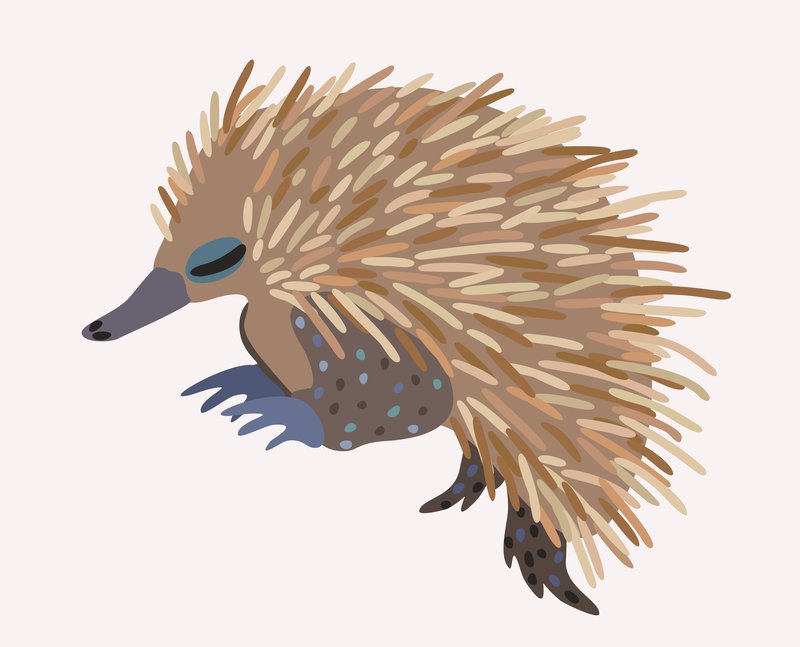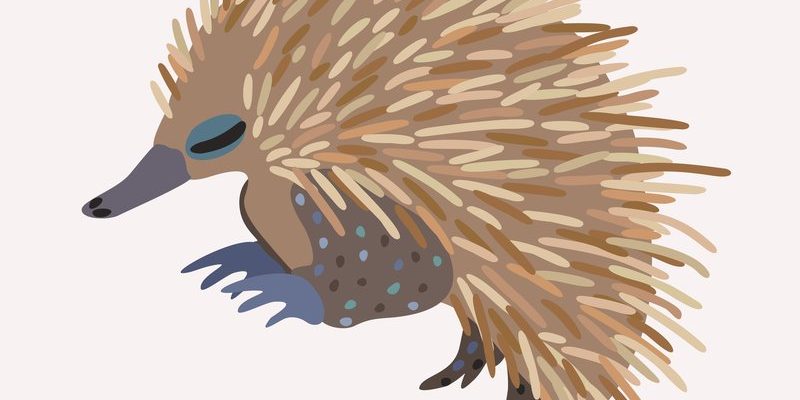
But why is the echidna so significant? Imagine the way certain animals carry stories or lessons in their being, like the wise owl or the cunning fox. In the case of the echidna, its unusual appearance and behavior weave into the folklore of the regions it inhabits, becoming symbols of resilience, adaptability, and mystery over time. Let’s dive into how this quirky creature is represented in culture and folklore across the world.
The Echidna in Aboriginal Mythology
Aboriginal culture is rich in stories that not only entertain but also teach core values and beliefs. The echidna has a notable presence in these stories. For many Indigenous Australians, the echidna is considered a totem animal, symbolizing adaptability and protection. One popular tale tells of a clever echidna earning its spikes through a series of trials. This story resonates deeply, highlighting themes of perseverance and respect for nature.
In some regions, the echidna is linked to creation myths. These tales often describe how the echidna came to be, illustrating its role in balancing the ecosystem. The intricate relationship between the echidna and other animals is often highlighted, showcasing how every creature plays a vital role in the web of life. Honestly, it’s a beautiful reminder of how all beings are interconnected.
Moreover, the echidna features in various spiritual rituals, believed to carry significant meanings regarding healing and protection. The reverence for this creature emphasizes the connection Indigenous people have with the land and its inhabitants. You might be wondering how such stories influence modern perceptions of the echidna—let’s explore that further.
Modern Interpretations and Representations
Fast forward to contemporary culture, and the echidna has morphed into a symbol of uniqueness and resilience. You can find its cuddly representation in children’s books, cartoons, and even as plush toys. These modern depictions often highlight the echidna’s quirky features—like its spiky back and long snout—making it a favorite character among kids. It’s interesting how something so distinct can capture the hearts of so many.
Moreover, the echidna’s unique egg-laying feature sets it apart in discussions about evolution and adaptation. With its ability to thrive in various environments, the echidna serves as a metaphor for overcoming challenges, reminding us that we, too, can adapt in the face of adversity. Here’s the thing: when we see this adorable creature in pop culture, it often embodies these themes of resilience and creativity.
You might also notice that the echidna represents biodiversity. As humans grapple with environmental challenges, this little mammal becomes a symbol of the need for conservation. Many campaigns for wildlife protection spotlight the echidna, emphasizing its role in the ecosystem. Overall, these modern representations effectively bridge the gap between traditional stories and contemporary values.
Folklore Across Different Cultures
While the echidna is closely associated with Australian Aboriginal culture, various other cultures have their own tales. For instance, in some Pacific Island cultures, the echidna is seen as a guardian spirit, believed to protect against misfortune. These stories often depict the echidna as wise and gentle, offering guidance to those facing challenges.
In regions where the echidna’s habitats overlap with human settlements, local folklore sometimes portrays this creature as a trickster. These tales often illustrate clever antics that get the echidna into trouble, serving as cautionary tales about understanding one’s limits. It’s fascinating to see how the echidna’s traits can inspire different narratives—whether as a wise guardian or a playful troublemaker.
Through these various cultural lenses, the echidna transcends its biological role. It becomes a character in a larger narrative about humanity’s relationship with nature. The stories tell us not only about the echidna but also reflect the values and priorities of each culture, creating a rich tapestry of beliefs and teachings.
Visual Art and The Echidna
Art is another avenue through which the echidna has made its mark. Many Indigenous Australian artists incorporate the echidna into their artwork, utilizing it as a symbol of resilience and connection to the land. The spiny silhouette of the echidna often features in paintings and sculptures, serving as a visual reminder of nature’s beauty and complexity.
In contemporary art, the echidna appears in various forms, from playful illustrations to intricate designs. Artists often create works that emphasize the echidna’s unique features, drawing attention to its endearing qualities. You might find art that tells a story—maybe a family of echidnas quietly exploring their environment. These pieces function as both decorative art and educational tools, sparking conversation about the echidna’s role in the ecosystem.
Additionally, the rise of social media has allowed artists to share their interpretations of the echidna with a broader audience. Platforms like Instagram and Pinterest are inundated with echidna art, captivating people around the globe. Honestly, it’s a fantastic way to celebrate this creature and inspire appreciation for wildlife.
The Echidna in Literature
Literature, too, has embraced the echidna in various forms. Children’s books frequently feature this quirky animal as a central character, imparting lessons about friendship, bravery, and the importance of being yourself. Let me explain what makes these stories resonate: kids love animals, and stories that include a unique character like the echidna create memorable connections.
In addition to children’s literature, more serious works dive into the echidna’s ecological importance. Writers exploring themes of nature often mention the echidna as a symbol of survival and adaptation. You might uncover poems or essays that articulate the delicate balance of ecosystems, with the echidna representing resilience in the face of change.
By weaving the echidna into literature, authors can engage readers’ imaginations while promoting awareness. It’s an excellent approach to draw attention to environmental issues while celebrating a truly unique creature.
The echidna is more than just an unusual animal; it’s a symbol rich with meaning across cultures and stories. From the rich Aboriginal myths that speak of its significance to its modern interpretations and representations in art and literature, this creature stands as a testament to nature’s wonder. Whether seen as a guardian spirit, a playful trickster, or a source of resilience, the echidna reminds us of the interconnectedness of life.
As we navigate our lives, stories like these help us understand our place in the world and the importance of respecting all creatures. So, the next time you think of the echidna, remember that it carries with it a legacy of wisdom and adaptability that resonates across cultures and generations. Through exploring these representations, we gain a deeper appreciation for not just the echidna but for the rich tapestry of life that surrounds us.

